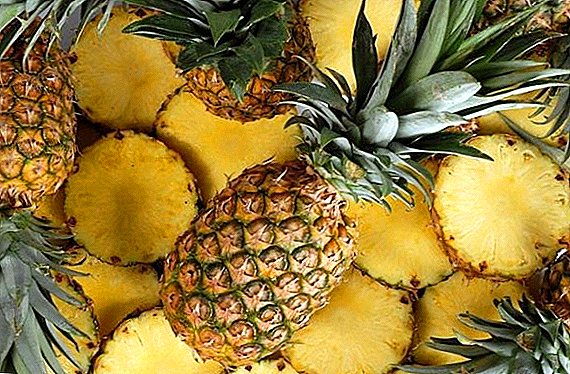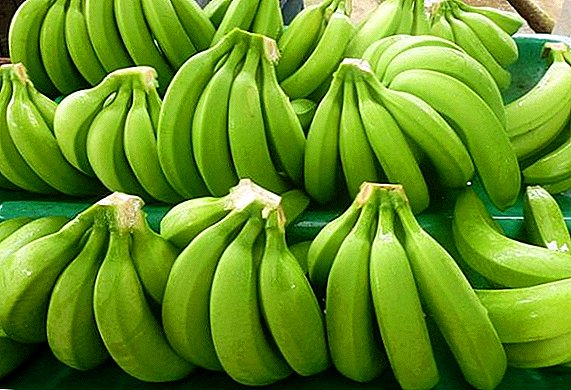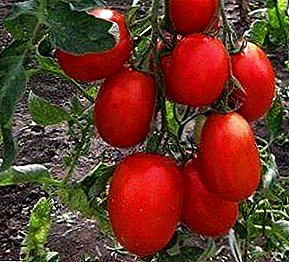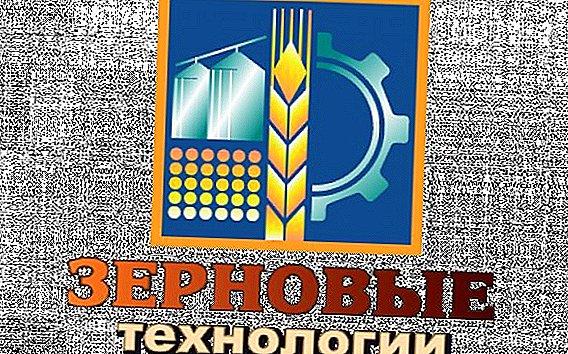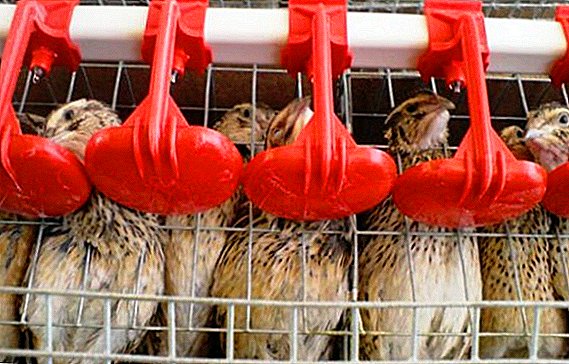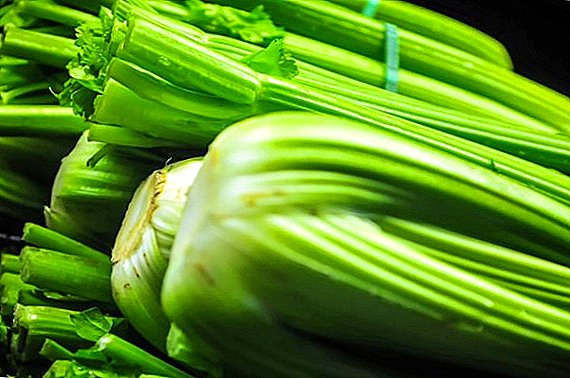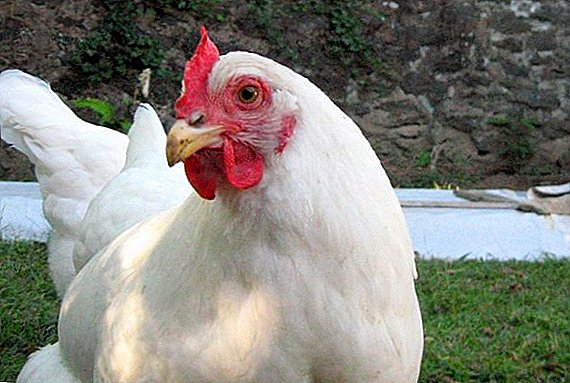 White chickens have gained fame among the hens, but it’s hard not to get lost in the choice of birds for their farm. Today we will provide you with descriptions and characteristics of the most popular breeds, so that each poultry farmer can choose the right one for growing.
White chickens have gained fame among the hens, but it’s hard not to get lost in the choice of birds for their farm. Today we will provide you with descriptions and characteristics of the most popular breeds, so that each poultry farmer can choose the right one for growing.
Origin
The domestication of chickens did not happen immediately, initially they were wild and bred in natural conditions. There is no exact data on when a person made a chicken home, but there is an assumption that this happened more than four thousand years ago. The increased demand for eggs made people think about how to increase egg production in chickens.  By the end of the XIX century, domestic chickens were clearly divided into egg and meat. Of all the breeds of white chickens, only a small part is considered natural, the rest of the hens are the result of the work of breeders.
By the end of the XIX century, domestic chickens were clearly divided into egg and meat. Of all the breeds of white chickens, only a small part is considered natural, the rest of the hens are the result of the work of breeders.
The productivity of females in carrying eggs depends on the eggs, which are laid in their body during birth. The number of eggs in a chicken is about 1000, but breeders managed to bring out chickens, in which their number reaches 4000. This is what allows the birds to show high results in carrying eggs.
Important! The highest productivity is observed in chickens under the age of three years, after which their egg production decreases.
Breeds and crosses of white chickens
Below are the most common breeds of white laying hens and their characteristics.
Adler silver
The beginning of this breed was laid on the Adler poultry farm. These chickens are well adapted to different climatic conditions, adaptation takes only a few days.  They have good immunity, thanks to which they are resistant to many diseases (for example, smallpox) and have high survival rates (in chickens, on average, 97%, in adults - 85%). These birds get along well with representatives of other breeds of chickens.
They have good immunity, thanks to which they are resistant to many diseases (for example, smallpox) and have high survival rates (in chickens, on average, 97%, in adults - 85%). These birds get along well with representatives of other breeds of chickens.
The weight of Adler silvery roosters ranges from 3.5 to 4 kg, chickens from 2.8 to 3 kg. Their egg production period lasts up to four years, which is longer than most other layers. Each year, the chicken carries 180-200 light brown eggs, each weighing 56-58 g.  Among the external characteristics of these birds are the following:
Among the external characteristics of these birds are the following:
- neat head round, beak yellow;
- round eyes with a copper tint;
- red lobes;
- middle leaf-shaped comb with five teeth;
- the body is of medium size, the back is straight and wide;
- rounded tail with curled up braids;
- middle limbs with prominent tibiae, tarsus well developed.
Did you know? Chickens can recognize and remember more than 100 subjects, including humans.
Bress Gallic
This breed was bred by French breeders, it is the pride of this country. It is rarely seen here, but given the high interest of poultry farmers in it, in the future there is a high probability that these birds will soon spread.  Bress Gallic chickens are characterized by vitality and endurance, as well as a calm disposition. The main advantage of this breed is the rapid maturation of its representatives; by the month the young growth is already fledged and weighs from 550 to 750 g.
Bress Gallic chickens are characterized by vitality and endurance, as well as a calm disposition. The main advantage of this breed is the rapid maturation of its representatives; by the month the young growth is already fledged and weighs from 550 to 750 g.
Representatives of this breed are characterized by rapid development and good weight, roosters reach a weight of 5 kg, chickens - up to 3.5 kg. Annually laying hens bring from 180 to 240 light cream or white eggs, whose weight is 60-85 g.  The exterior of the Bress of Gallic chickens is as follows:
The exterior of the Bress of Gallic chickens is as follows:
- a graceful head on a short neck, adorned with a three-prong comb;
- large, dark brown eyes;
- almond-shaped lobes white;
- medium sized body with powerful chest;
- tail at an angle of 45 ° to the waist, long braids;
- medium four-footed legs gray-blue color.
It is interesting to get acquainted with the most unusual breeds of chickens.
May Day
These chickens owe their appearance to the Pervomaisky state farm in the Kharkiv region (Ukraine), where they were bred in 1935-1941. They are calm and not noisy, they easily tolerate cold temperatures and do not differ in fastidiousness. Representatives of the rock are inactive, not affected by stress factors.  An adult rooster weighs up to 4 kg, and a chicken weighs up to 3.5 kg. Each year the hens give from 180 to 200 brown eggs, which weigh about 60 g.
An adult rooster weighs up to 4 kg, and a chicken weighs up to 3.5 kg. Each year the hens give from 180 to 200 brown eggs, which weigh about 60 g.  External characteristics of May Day chickens look like this:
External characteristics of May Day chickens look like this:
- the head is wide, the crest is small pinkish, the beak is yellow;
- eye color is orange-yellow;
- red earlobes;
- the body is deep, set horizontally;
- small tail located at an angle of 15 ° to the body;
- short yellow legs.
Learn more about the May Day breed of chicken.
Leggorn
The homeland of the leggorn is Italy, later they became interested in America in these birds, and from us they have gained popularity since the beginning of the 20th century.  It is possible to grow these birds both in the southern and in the northern regions, as they are characterized by good adaptation to natural conditions. The maintenance of chickens unpretentious, the main thing: to provide them with a spacious and not stuffy chicken coop, in which they will be dry.
It is possible to grow these birds both in the southern and in the northern regions, as they are characterized by good adaptation to natural conditions. The maintenance of chickens unpretentious, the main thing: to provide them with a spacious and not stuffy chicken coop, in which they will be dry.
Roosters weigh about 3 kg, and chickens, on average, 2 kg. Annually, hens bring from 170 to 240 white eggs weighing about 60 g.  Their exterior looks like this:
Their exterior looks like this:
- head is average, scallop leaf-shaped;
- eyes of young animals have a dark orange color, with age it becomes more faded;
- earlobes are white;
- body elongated, chest protruding forward, back straight;
- tail wide at base;
- limbs of medium length.
Did you know? In 1971, in America and in 1977, eggs were recorded in the USSR with 9 yolks in each.
Russian white
These birds were selected in the USSR in 1929-1953, and white leggorn and local aborigines were used for crossing. They are not capricious, resistant to many neoplastic diseases, they have excellent immunity, they are easy to feed and maintain.
Their weight is small: roosters weigh up to 3 kg, and chickens - up to 2.1 kg. They begin to carry eggs from 5 months and annually bring from 200 to 240 white eggs weighing from 56 to 60 g.  Outwardly, these birds look like this:
Outwardly, these birds look like this:
- medium sized head with medium yellow beak;
- in the hens, the crest hangs to the side, in cocks, it stands straight and has 5 teeth;
- earlobes white;
- body with strong bones and tightly fitting wings;
- tail short, well developed;
- The limbs are strong and medium in size.
See also: Top 10 red chickens
Hisex White
The homeland of these chickens is Holland, where they were brought to the Dutch company "Hendrix Genetics Company" in the 70s of the XX century. Hisex White is characterized by vivacity, mobility and activity. They noted persistence in transmitting infectious, fungal and helminthic diseases.  These birds are distinguished by good productivity, despite the low weight of 1.8 kg for roosters and 1.6 kg for chickens. As early as 4-4.5 months, chickens begin to nest and produce annually about 300 light brown eggs, weighing from 63 to 65 g.
These birds are distinguished by good productivity, despite the low weight of 1.8 kg for roosters and 1.6 kg for chickens. As early as 4-4.5 months, chickens begin to nest and produce annually about 300 light brown eggs, weighing from 63 to 65 g.  For birds of cross Haysex White such exterior signs are characteristic:
For birds of cross Haysex White such exterior signs are characteristic:
- small head with a leaf-like red comb;
- light brown eyes;
- an extended neat physique with a massive chest;
- tail fluffy and straight;
- short legs.
We advise you to read: breeding and maintenance of chickens for beginners; the best breeds; how much chicken lives; than chicken eggs, meat and offal are useful.
Shaver white
The birds of this cross owe their appearance to Dutch breeders. Thanks to the well-chosen specimens and good breeding, Chickens Shaver White were bred, which, when consumed with a small amount of feed, have high egg production.
They are not prone to fights, have strong immunity and sufficient stamina. Get along well with chickens that have a calm character.  The weight of both rooster and chicken ranges from 1.6 to 2 kg. Laying shaver White give a year from 200 to 250 white eggs with a strong shell and a weight of 63 g.
The weight of both rooster and chicken ranges from 1.6 to 2 kg. Laying shaver White give a year from 200 to 250 white eggs with a strong shell and a weight of 63 g.
External characteristics of birds shaver white:
- small head, strong yellow beak;
- color comb and earrings bright red;
- chest and abdomen full, rounded, there is a back arch in the middle;
- small tail;
- limbs strong with missing plumage.
Important! For good productivity of laying hens, it is important to keep the temperature in the coop within + 10 ... +20 ° C. At temperatures below +10 ° C, the laying rate of chickens decreases, and with a negative indicator, it can stop altogether.
Moscow
It was withdrawn from 1947 to 1959. in Zagorsk (Moscow region) specifically for the conditions of the Russian climate.  Representatives of the Moscow breed are well tolerated by various climatic conditions, have high immunity and are resistant to various diseases.
Representatives of the Moscow breed are well tolerated by various climatic conditions, have high immunity and are resistant to various diseases.
Adult roosters reach a weight of 3.1 kg, chicken - 2.4 kg. Each year, laying hens give 180 eggs with a white color and a weight of 55 g.
 External data of the Moscow breed of chickens:
External data of the Moscow breed of chickens:
- small pink-headed head, yellow beak;
- lobes are white-red;
- the body is deep, the chest is convex and round, the back is long and flat;
- wings and tail well developed;
- limbs low, yellow.
There is also a Moscow breed with black color.
Cornish
These chickens were bred in the UK in the middle of the XIX century. The first birds did not carry a lot of eggs, but with the help of breeding work, scientists were able to improve this figure.  These birds are distinguished by good endurance of young animals, excellent adaptation to different climates and unpretentiousness in feeding. The Cornish breed also has a very good incubation instinct.
These birds are distinguished by good endurance of young animals, excellent adaptation to different climates and unpretentiousness in feeding. The Cornish breed also has a very good incubation instinct.
Cornish breed has a high meat productivity.
The weight of adult roosters is 3.5-4.5 kg, and chickens weigh up to 3.5 kg. The egg production of Cornish is 130-160 eggs per year. The egg shell color is brown, and its weight is 50-60 g.  Cornish breed has such external characteristics:
Cornish breed has such external characteristics:
- head is broad, crest comb;
- red earlobes;
- body dense and muscular, broad chest;
- slightly hanging short tail;
- limbs with missing plumage.
White chickens are in demand among poultry farmers due to their productivity. Using information about popular breeds of laying hens, you can easily find suitable residents for your chicken house.


